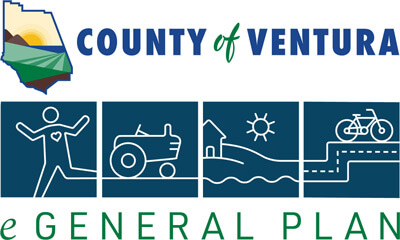Pursuant to Senate Bill (SB) 1000 (2016), general plans adopted after January 1, 2018, must include an
environmental justice element or include goals, policies, and objectives in other element(s) of the general plan addressing health risks within “designated disadvantaged communities.”Designated disadvantaged communities are identified by the California Environmental Protection Agency pursuant to Section 39711 of the Health and Safety Code or are low-income areas that are disproportionately affected by pollution and other hazards that can lead to negative health effects, exposure, or environmental degradation. Household incomes for “low-income areas” are at or below 80 percent of the statewide median income or with household incomes at or below the threshold designated as low income by the Department of Housing and Community Development’s list of state income limits adopted pursuant to Section 50093 of the Health and Safety Code. Designated disadvantaged communities in Ventura County are shown on Figure 2-6.
SB 244 (2011) requires cities, counties, and local agency formation commissions (LAFCO) to identify
disadvantaged unincorporated communities and provide an analysis of water, wastewater, stormwater, drainage, and structural fire protection needs or deficiencies. SB 244 defines a “disadvantaged unincorporated community” as a fringe, island, or legacy community in which the median household income is 80 percent or less than the statewide median household income.
For the Ventura County 2040 General Plan, environmental justice is addressed as a cross-cutting topic, with goals and policies incorporated throughout the General Plan as it relates to each element.
Ventura County has established a Guiding Principle on environmental justice issues. As stated in Chapter 1, Ventura County is “Commit[ted] to the fair treatment of people of all races, cultures, and incomes with respect to the development, adoption, implementation, and enforcement of environmental laws, regulations and policies, protect disadvantaged communities from a disproportionate burden posed by toxic exposure and risk, and continue to promote civil engagement in the public decision-making process.”
There are two major components of environmental justice. One is meaningful involvement in the decision-making process, and the second is the actual planning, siting, development, and operations of public facilities and infrastructure. An overview of environmental justice and disadvantaged communities in the county is located in Section 3.11, “Environmental Justice and Disadvantaged Communities,” and Section 4.4, “Active and Healthy Living,” of the Background Report.
